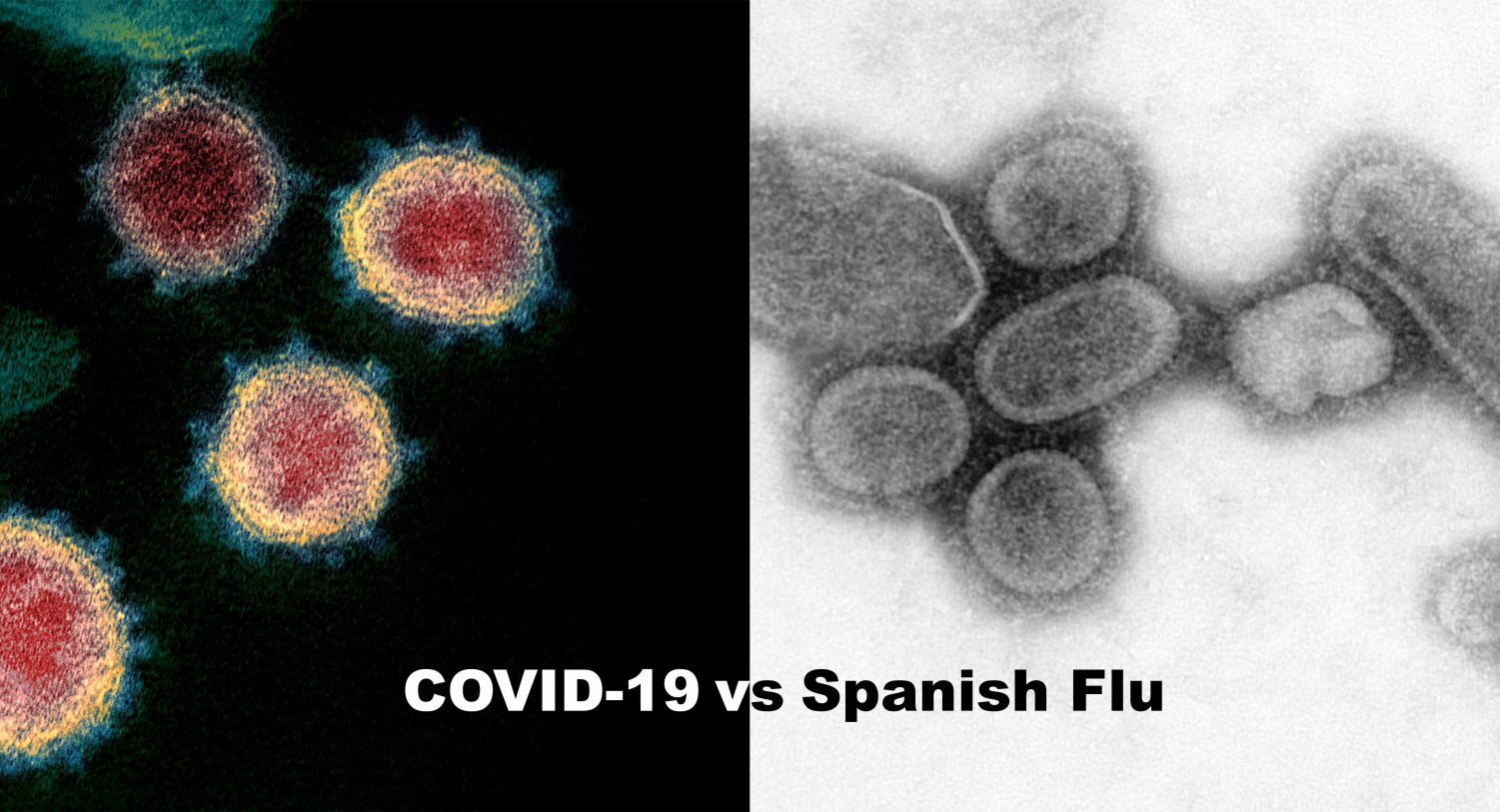Coronavirus vs. The Spanish Flu
April 17, 2020
As COVID-19 becomes an extremely important aspect of our lives, we have started to compare it to other epidemics and pandemics. One such deadly disease was the 1918 Influenza pandemic, more commonly known as the Spanish flu, which infected 500 million people from 1918 to 1920. While both Influenza and COVID-19 are respiratory diseases with common symptoms, the two are still quite different.
1. They are caused by different viruses.
COVID-19 was caused by a coronavirus in the Coronaviridae virus family. Slightly different coronaviruses caused other similar diseases such as SARS and MERS. These viruses have a spherical shape with crown-like spikes and are enveloped, meaning the virus enters the cell through fusion at the membrane or through endocytosis after grasping onto cell surface receptors. On the other hand, the Spanish flu was caused by the Influenza A virus subtype H1N1 (A/H1N1) that originated in birds. This virus caused the 2009 Swine flu as well. Like the coronavirus, the influenza virion is also spherical and is also an enveloped virus. However, its spikes are glycoproteins that are inserted into the membrane of a cell.
2. They generally affect different groups of people.
Although there have been some cases of healthy younger people getting severely affected by COVID-19, severity, and fatality are usually seen in older people with pre-existing health conditions. Young adults from the age of 20 to 40 have a mortality rate of less than 1%. For the Spanish flu, the people most affected were healthy people around 20 years old. With children and elders, the mortality rate for the Spanish flu was also greater than the mortality rate with COVID-19.
3. The technology is more advanced now.
A factor that added to the extremely high number of infected in 1918 was the lack of technology. Scientists could not see the virus without the electron microscope and did not know how to isolate the virus strain. There were no antibiotics or technology to create a vaccine. Because of World War I, most of the focus was on fighting the war instead of isolating people to slow the spread of the virus.
4. There is a difference in how much information is spread to the public.
Almost everyone today is informed about COVID-19. This was not the case in 1918, as a lot of nations would not report exactly what was going on. The 1918 flu pandemic is called the Spanish flu because Spain had limited censorship and reported freely on the issue.


